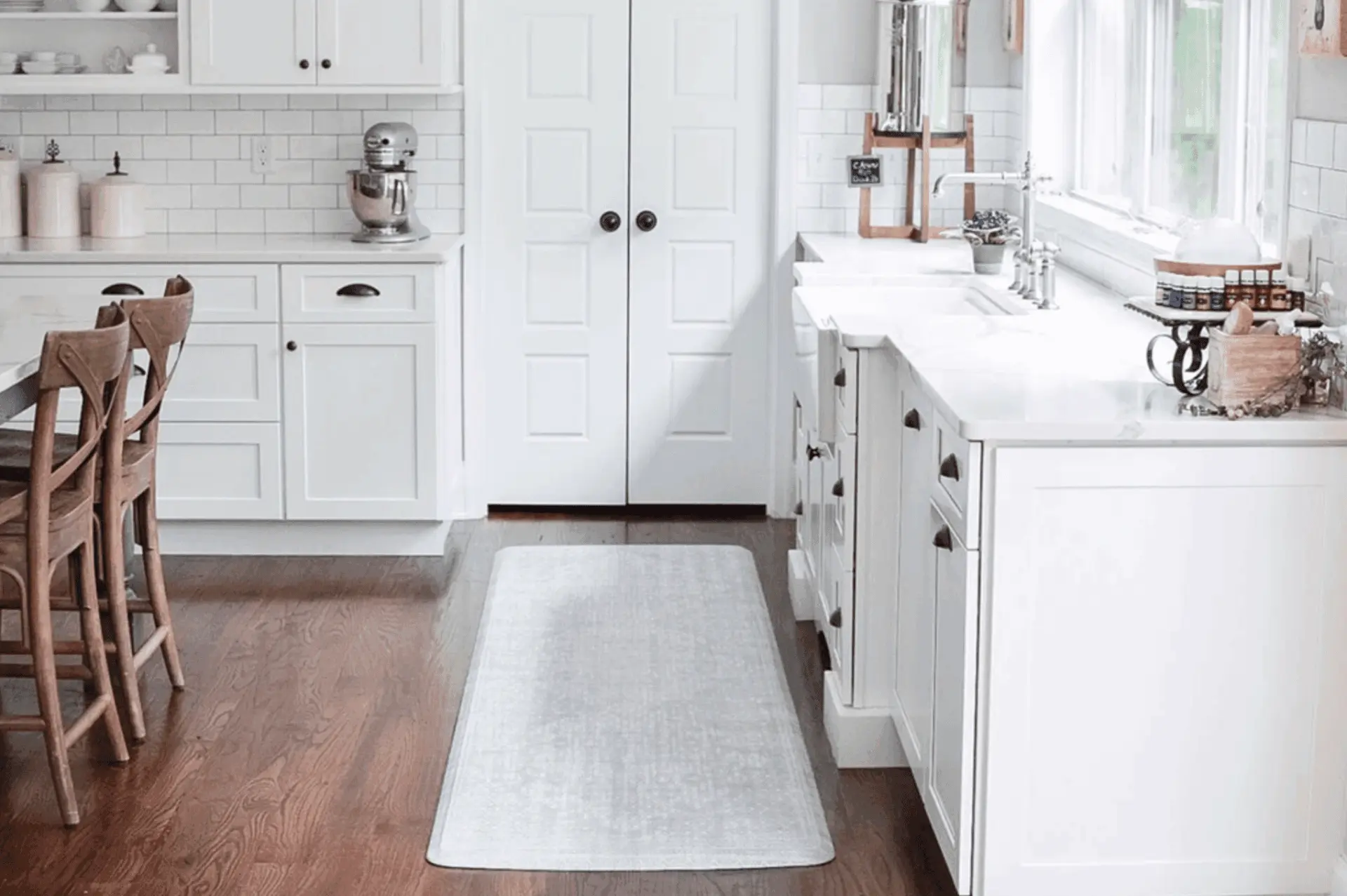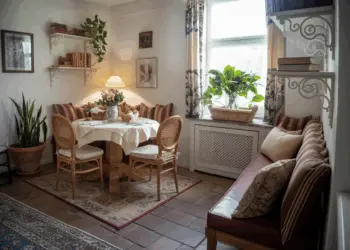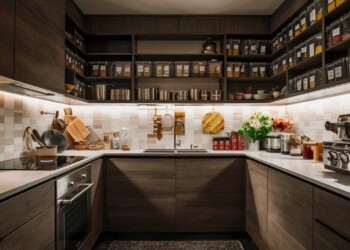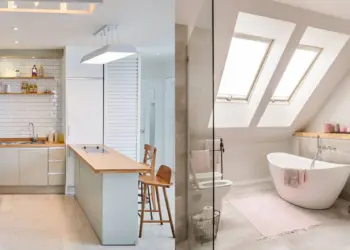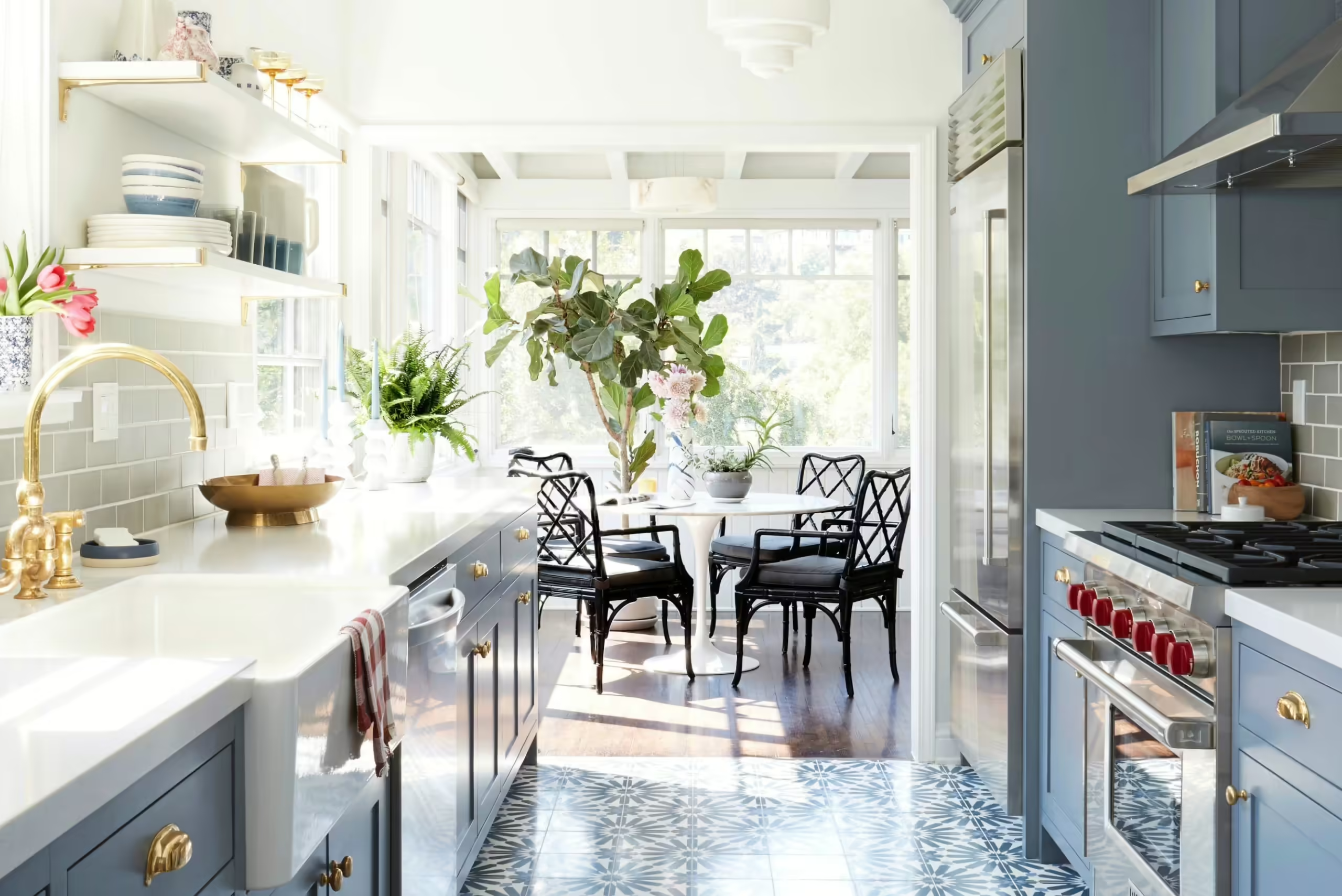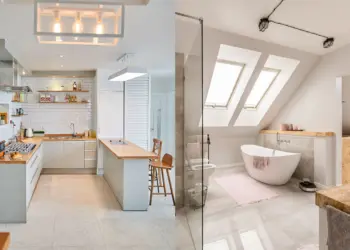When it comes to selecting the ideal rug for your kitchen, the multitude of choices can be overwhelming. The kitchen, being a diverse space in terms of size and layout, demands a careful selection that not only complements the design but also serves practical purposes. In this comprehensive guide, we’ll navigate through key considerations, from size and shape to color coordination and material, ensuring that your kitchen rug not only enhances aesthetics but also stands up to the demands of this high-traffic area.
Table of Contents
Measuring Your Kitchen Room Size
Before delving into the myriad options available, the first step is to measure your kitchen room size. A crucial aspect often overlooked, accurate measurements prevent the disappointment of realizing your newly acquired rug doesn’t fit as expected. Though a bit of math is involved, this task is quick and essential. Once armed with precise measurements, you can confidently explore various ideas for kitchen rugs.
Determining the Right Size
Now that you have your kitchen floor measurements, the next consideration is determining the appropriate rug size. The general dimensions offer a helpful guide:
Large Kitchen Rug Sizes: Over 200 Square Feet
In a large kitchen, strategic placement of one large rug or runners alongside an island can significantly enhance the sense of space. Opt for rug sizes such as 3’x5′, 5’x7′, or suitable runner lengths.

Medium Kitchen Rug Sizes: 100 to 200 Square Feet
For medium-sized kitchens, an area rug or a runner along one counter length works best. Avoid overcrowding by sticking to sizes like 3’x5′ and 5’x7′. Consider a 2.5’x7′ runner for a stylish alternative.

Small Kitchen Rug Sizes: Under 70 Square Feet
Even small kitchens can benefit from the addition of a well-chosen rug. Opt for smaller sizes like 2’x3′ or 3’x5′, and if a runner fits, go for a 2.5’x7′ option.

Exploring Rug Shapes
While rectangular or square rugs are popular choices, don’t limit yourself. Consider options like half-moon rugs for kitchen sinks or stoves, or even embrace the trend of round rugs for a geometric touch in contemporary kitchens.

Strategic Placement of Kitchen Rugs
Choosing where to place your kitchen rug is crucial. Whether centering it in the room, along the countertop, or under bar stools, ensure it complements the layout. Avoid placing rugs under islands for easy cleaning and accessibility.
Color Coordination for Harmony
To seamlessly integrate your kitchen rug with the existing color scheme, identify 2 or 3 main colors in your kitchen. The chosen rug color can influence the mood – warm hues for vibrancy and cool tones for a calming effect. In smaller kitchens, opt for light-colored rugs to create a more open feel.
Achieving a cohesive look in your kitchen involves thoughtful color coordination between your rug, cabinets, and countertops. Here’s how you can do it:
- Identify Dominant Colors:
- Determine the dominant colors of your cabinets and countertops. These are often neutrals like white, gray, or wood tones.
- Choose a Complementary Rug Color:
- Select a rug color that complements the dominant colors in your kitchen. This could be a shade found in your cabinets or countertops.
- Consider Patterns and Textures:
- If your cabinets and countertops are solid, you have more flexibility with rug patterns and textures. Consider a pattern that incorporates the dominant colors.
- Match or Contrast:
- Decide whether you want the rug to match the kitchen elements for a harmonious look or contrast for added visual interest. Matching tones creates a seamless appearance, while contrasting adds drama.
- Size Matters:
- Ensure the rug size fits the space well. A runner along the sink or a larger rug in the main traffic area can tie everything together.
- Balance with Accents:
- Use kitchen accessories like dish towels, small appliances, or decor items to echo the rug’s color. This creates a balanced and intentional color scheme.

Critical Features in a Kitchen Rug
When investing in a kitchen rug, prioritize slip resistance, stain resistance, and water resistance. Given the kitchen setting, these features are non-negotiable. Look for options with non-slip rubber, consider a rug gripper tape, or explore the comfort of foam standing mats.
Choosing the Right Fabric
The fabric of your kitchen rug plays a pivotal role in durability and maintenance. Consider the following options:
- Cotton: Easy to clean, ideal for families.
- Natural Fiber (Jute, Sisal, Bamboo): Extremely durable.
- Polyester and Polypropylene: Non-flammable and easy to clean.
- Wool: Warm and water/stain-resistant.

Optimal Thickness of Kitchen Rugs
While a plush rug may seem tempting, safety is paramount. Opt for thinner rugs (low pile) to avoid tripping hazards. Familiarize yourself with the term “pile” when shopping – low pile rugs, typically ¼ inch or shorter, are suitable for kitchens.
Considering Current Kitchen Decorations
Harmony is key when combining kitchen decor with rugs. If your kitchen boasts bold colors, opt for neutral-toned rugs to prevent color clashes. Conversely, in more muted kitchens, introduce vibrancy with solid or multi-colored rugs.

Matching Design Styles with Kitchen Rugs
Tailoring your rug choice to your design style enhances overall aesthetics. Consider these pairings:
- Bohemian: Colorful patch boho with neutral or white cabinet doors.
- Contemporary: Blue diamond or herringbone-patterned runner.
- Modern: Black and white checkered runner with light wood floors.
- Rustic/Farmhouse: Neutral-toned jute or sisal flatweave runner.
- Traditional: Red elegant Persian rug with neutral-toned countertops.

Tips for Shopping for new Kitchen rug
As you embark on your quest for the perfect kitchen rug, keep these key points in mind:
- Leave 18 inches of floor space between the rug and counter.
- Adjust spacing to 12-18 inches for 3 runners around a kitchen island.
- U-shaped kitchens may require center placement with 18-24 inches of floor space.
- Matching rugs are essential when both are visible from one spot.
- Complement, don’t necessarily match, countertops and cabinets.
- For sink placement, opt for a rug 6 inches longer than the sink length.
- High-traffic areas like galley-style kitchens benefit from at least a 10-foot runner.
- Add a round rug for kitchen reading nooks or experiment with octagon-shaped rugs for contemporary styles.
- A bold and colorful striped runner works well for a timeless and classic feel.

FAQs
What to Look for in a Kitchen Mat?
Non-slip backing for safety, Easy-to-clean materials like rubber or vinyl, Adequate thickness for comfort.
How do I choose a kitchen floor mat?
- Consider the size to fit your kitchen space.
- Opt for durable and stain-resistant materials.
- Select a mat with beveled edges to prevent tripping.
What type of mat is best for kitchen?
- Gel or foam mats for comfort during prolonged standing.
- Anti-fatigue mats to reduce stress on legs and back
How do I choose a kitchen rug?
- Size should complement your kitchen layout.
- Choose materials that resist spills and stains.
- Patterns or colors that match kitchen decor.
What is the difference between a kitchen mat and a rug?
- Mats are typically smaller, designed for high-traffic areas.
- Rugs are larger, adding a decorative touch to the kitchen
Do rugs look good in kitchens?
- Yes, rugs can enhance the aesthetic and provide comfort.
- Opt for low-pile rugs for easier maintenance.
